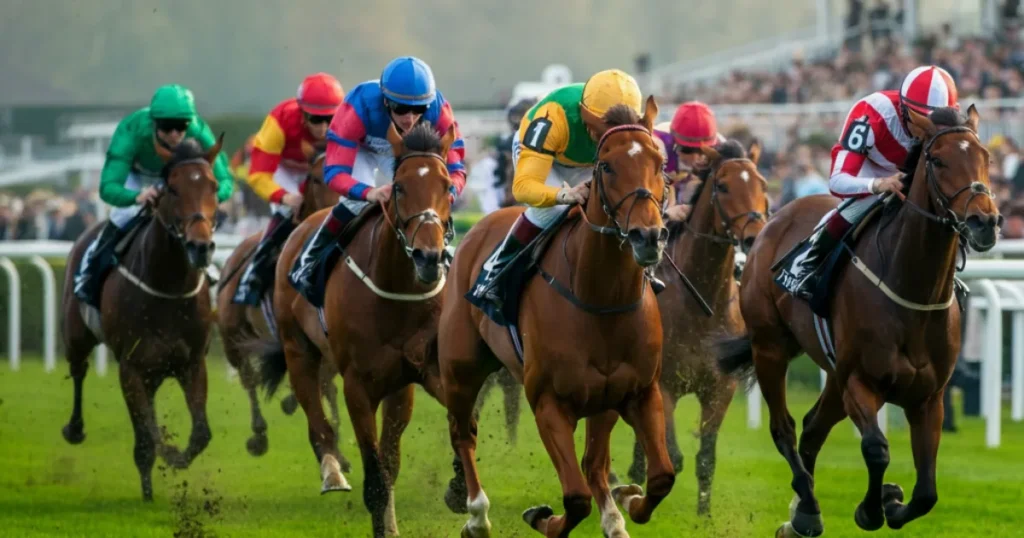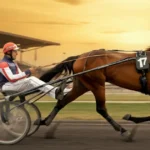Horse racing isn’t just a sport; it’s a passion, a strategy, and for many, a thrilling gamble that combines instinct with data-driven decision-making. Among the world of horse racing surfaces, turf racing stands out as one of the most exciting and strategically challenging aspects of the sport. With the rise of “Boss Turf,” a term increasingly used to describe mastery over turf racing, enthusiasts and bettors alike are focusing on gaining an edge in this unique arena.
Whether you’re a casual fan, a seasoned horse racing enthusiast, or a betting pro looking to refine your strategy, this guide will break down everything you need to know about navigating the world of turf racing. From understanding the different types of turf courses to decoding performance statistics and identifying industry leaders, we’ll show you why turf racing remains a pinnacle of the sport and how to step up your game.
The Significance of Boss Turf in Horse Racing
Turf racing, run on grass surfaces, demands a distinct skill set from both horses and jockeys. What sets it apart? The terrain often favors speed and agility over brute strength, resulting in thrilling, close finishes. The term “Boss Turf” has emerged as shorthand for excelling in this area, with horses, trainers, and even bettors striving for dominance in turf competitions.
Unlike dirt tracks, turf courses cater to lighter-footed horses who excel on firm, well-manicured grass. This difference introduces endless variables, from weather impacts to course conditions, making turf racing highly nuanced and strategic. And with major events like the Belmont Derby and Breeders’ Cup Turf showcasing some of the finest turf runners worldwide, its growing significance in global horse racing cannot be ignored.
For horse racing enthusiasts and bettors, mastering “Boss Turf” is no longer optional but essential, as turf races offer some of the biggest payouts and most dramatic outcomes in the sport.
Understanding the Different Types of Turf Courses
Not all turf courses are created equal. Each comes with its own set of conditions and quirks that can dramatically impact both race outcomes and wagering strategies. To conquer the world of turf racing, knowing these subtleties is key.
Firm Turf
Firm turf is the ideal condition for most turf races. The ground is dry, compact, and level, allowing horses to maintain consistent traction. Horses with strong acceleration and the ability to stay on pace tend to perform well on firm turf. Major US tracks, including Belmont Park and Santa Anita, often feature firm courses during prime racing seasons.
Yielding or Soft Turf
Rain or excessive moisture can turn a firm course into soft or yielding turf, a condition that tests both a horse’s stamina and adaptability. Horses with experience in navigating heavy ground (often hailing from European venues such as Ascot or Longchamp) have the upper hand here.
Undulating Courses
Some turf courses have noticeable elevation changes, with uphill and downhill segments. These undulations add another degree of complexity, making it critical to identify horses and jockeys with proven performance on such tracks. Courses such as Epsom Downs offer an example of challenging undulating surfaces.
Familiarity with these categories not only helps with analysis but also aids in identifying specific setups and horses suited to conditions close to your bets.
Analyzing Past Performance on Turf: Key Stats and Factors
Analyzing a horse’s past turf performance is one of the strongest indicators of future success. But it’s not only about speed or time; here are the key factors to consider when combing through racing stats:
- Turf-Specific Records
Look for a horse’s past records specifically on turf surfaces. A champion dirt racer may not necessarily excel on turf courses due to differences in surface grip and pacing.
- Course Adaptability
How well does the horse handle different track conditions? If a turf expert with wins on soft ground is running a firm-turf race, proceed with caution.
- Jockey Performance
Skilled jockeys with strong records on turf surfaces bring an extra layer of confidence to your wager. Their ability to gauge the race tempo and position is often decisive.
- Distance Preference
Some horses are best suited for sprints (5-7 furlongs), while others excel in longer distances. Knowing their track preference gives you the upper hand.
When combined, these data points allow bettors to make informed decisions and, most importantly, avoid misleading patterns.
Expert Tips for Betting on Turf Races
When approaching turf races from a betting perspective, strategy is everything. Here’s what the pros recommend to maximize your winnings:
- Follow the Weather
Turf conditions can change drastically with weather. Be sure to keep tabs on the forecast to anticipate whether the course will be yielding, soft, or firm.
- Weight Proven Turf Runners More Heavily
Focus on horses who’ve demonstrated success on turf versus those with promising dirt-track results. This is especially important for international races, where field composition varies widely.
- Don’t Overlook Longshots
Turf races are often unpredictable, with underdogs surprising the field. Make small exotic bets like exactas and trifectas to capitalize on potential upsets.
- Study Recent Trends
Some trainers and jockeys have a hot streak on specific turf circuits. Examples include William Haggas’ ascendancy on European networks or Chad Brown’s dominance over US turf events.
Patience and research will always outperform gut instincts in turf betting!
Notable Horses and Trainers Dominating Turf Racing
History boasts spectacular turf champions who’ve made their mark on the sport. Here are a few worth noting:
- Enable (UK)
This iconic mare, trained by John Gosden, claimed two victories in the Prix de l’Arc de Triomphe. Her agility, heart, and determination remain unbeaten.
- Bricks and Mortar (USA)
With legendary trainers like Chad Brown by its side, this phenomenal turf specialist ended its career with monumental wins, including the Breeders’ Cup Turf.
At the trainer level, Chad Brown, Andre Fabre, and Aidan O’Brien are highly regarded global turf masterminds. Betting on their strategies is always a solid move.
The Future of Turf Racing: Innovations and Trends
The landscape of turf racing is evolving, driven by innovation and demand for sustainability. Key trends include:
- International Turf Racing Expansion
Countries like Australia and Japan are making strides to enhance their turf circuits, aiming to draw global attention.
- Sustainable Turf Track Maintenance
With increased emphasis on environmentally friendly practices, tracks are investing in sustainable turf technology for longer-lasting, greener surfaces.
- AI-Powered Betting Models
Data analytics tools powered by artificial intelligence are enabling bettors to process massive amounts of information and make more precise wagers on turf races.
These changes ensure turf racing continues to grow as both a sport and a cultural phenomenon.
Why Turf Racing is a Thrilling and Strategic Aspect of Horse Racing
There’s no denying the allure of turf racing. Its unique surface introduces a layer of complexity that tests the resilience, adaptability, and preparation of horses, trainers, and bettors alike. Whether you’re watching champions like Enable soar across the grass or mapping out data-driven betting strategies, turf racing delivers a one-of-a-kind thrill.
Now that you’re equipped with insight into “Boss Turf,” it’s time to put that knowledge into action. Research, analyze, and enjoy the excitement that only turf racing can provide. And remember, strategy reigns supreme.







